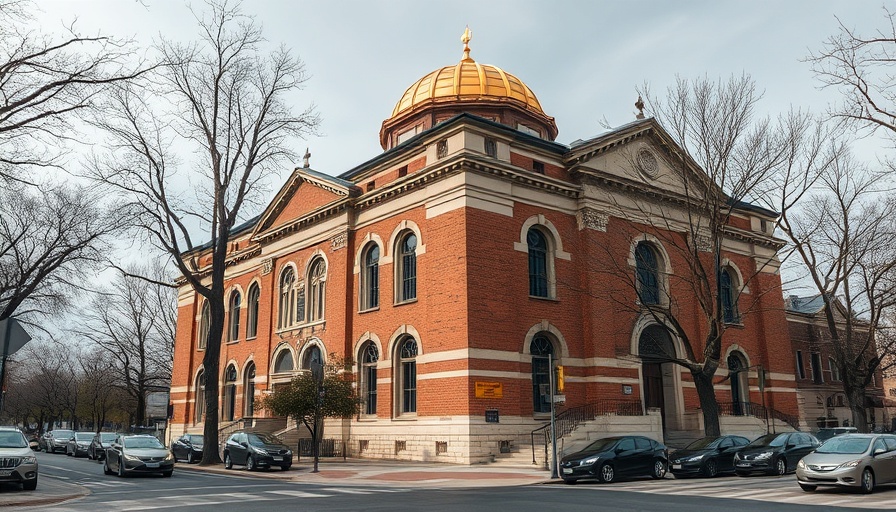
Preserving Heritage with Modern Solutions
The Historic Temple Beth El is more than just a building; it symbolizes the rich cultural heritage of the local Jewish community in Jersey City since 1926. With the recent approval for significant renovations, this 99-year-old synagogue is set to undergo a transformative makeover that not only pays homage to its past but ensures its functionality and safety for the future. The architectural firm Landau | Zinder has been tasked with this important renovation, focusing on critical updates that enhance both its aesthetic and practical applications.
Flood Resilience: A Priority for the Future
As seen with catastrophes like Hurricane Ida, the risks of flooding have accentuated the need for robust flood mitigation strategies. The design enhancements include canopies on two sides of the building, meticulously engineered to divert rain and runoff effectively, thereby reducing the risk of future water damage. With new, open basement window openings, the synagogue will not only become more inviting but also increase natural light and ventilation, aligning with modern design trends that value health-wellness aspects within sacred spaces.
Accessibility: Creating Inclusive Environments
In contemporary spaces, accessibility is paramount. The renovation introduces an elevator and a redesigned stairwell to improve wheelchair access, showcasing a commitment to inclusivity. The act of revitalizing the basement-level social hall also aligns with the trend of multi-functional community spaces, making it suitable for diverse activities while fostering intergenerational connectivity.
Modern Amenities While Honoring Tradition
Updating mechanical systems is crucial in today’s energy-conscious environment. The comprehensive overhaul will ensure that heating and ventilation systems are efficient and environmentally friendly. By integrating modern technology into this historic venue, the congregation can enjoy comfortable, year-round use without compromising the sanctuary's historical essence.
What This Project Means for the Community
For local businesses and property developers, the renovations at Temple Beth El serve as a vital example of integrating community needs with modern construction practices. As elements of sustainability and resilience become increasingly important, this project highlights the opportunities available for those engaged in construction and architectural innovation.
The Advantages of Preservation and Renovation
For those considering similar projects, the Temple Beth El renovation encapsulates the growing trend of preserving historical sites while upgrading them to meet contemporary standards. Not only does this maintain the cultural fabric of a community, but it also increases property values and enhances civic pride. It is a reminder that with thoughtful design and respect for history, community spaces can evolve without losing their identity.
This inspiring transformation at Temple Beth El is a positive step forward, showcasing how we can honor the past while ensuring safety and functionality for future generations. If you’re a business owner or developer, consider the lessons learned from this project to make informed decisions in your future endeavors.
 Add Row
Add Row  Add
Add 




Write A Comment